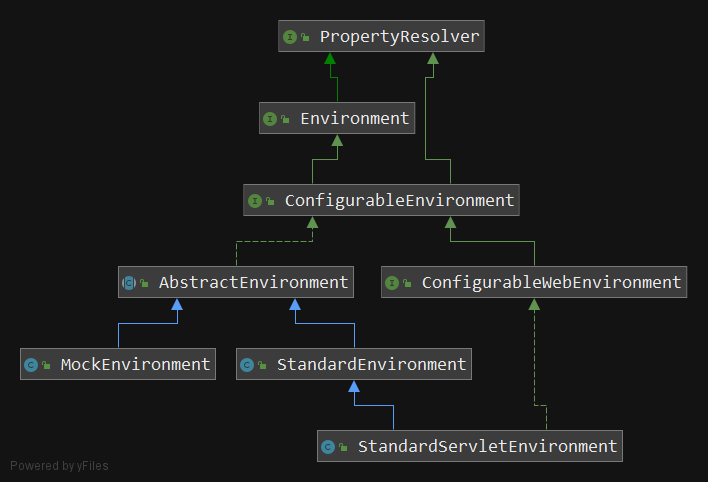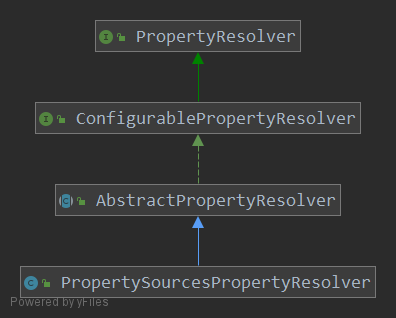Spring Environment源码解析
Environment关系图

从上图可以看出来 Environment 主要�有三个实现类:
-
MockEnvironment
用于mock的
-
StandardEnvironment
标准的环境
-
StandardServletEnvironment
用于web的环境
分析一下常用的StandardEnvironment
public interface Environment extends PropertyResolver {
//获取配置文件
String[] getActiveProfiles();
//获取默认的配置文件
String[] getDefaultProfiles();
//是否接受配置文件
boolean acceptsProfiles(Profiles profiles);
}
//看一下接口 PropertyResolver
//PropertyResolver 主要是获取对应的Properties值,String或者进行数据类型转换后的值
//同时会处理占位符的数据
public interface PropertyResolver {
boolean containsProperty(String key);
@Nullable
String getProperty(String key);
String getProperty(String key, String defaultValue);
@Nullable
<T> T getProperty(String key, Class<T> targetType);
<T> T getProperty(String key, Class<T> targetType, T defaultValue);
String getRequiredProperty(String key) throws IllegalStateException;
<T> T getRequiredProperty(String key, Class<T> targetType) throws IllegalStateException;
String resolvePlaceholders(String text);
String resolveRequiredPlaceholders(String text) throws IllegalArgumentException;
}

看一下StandardEnvironment的代码
public class StandardEnvironment extends AbstractEnvironment {
//系统的property名称
public static final String SYSTEM_ENVIRONMENT_PROPERTY_SOURCE_NAME = "systemEnvironment";
//JVM的property名称
public static final String SYSTEM_PROPERTIES_PROPERTY_SOURCE_NAME = "systemProperties";
//把系统的Properties和JVM的Properties存入
//此方法在父类的构造函数中进行调用
@Override
protected void customizePropertySources(MutablePropertySources propertySources) {
propertySources.addLast(new MapPropertySource(SYSTEM_PROPERTIES_PROPERTY_SOURCE_NAME, getSystemProperties()));
propertySources.addLast(new SystemEnvironmentPropertySource(SYSTEM_ENVIRONMENT_PROPERTY_SOURCE_NAME, getSystemEnvironment()));
}
}